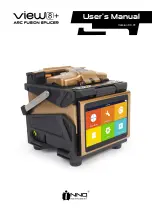
46131-0598 <90-00018>
P
AGE
19
2.
Enter the base (first) address to which the port will respond. Refer
to Fig. 9. Valid entries are 1 - 253. Hold down the F1 key to speed
through the addresses.
3.
Enter the desired baud. Valid entries are 300, 600, 1200, 2400,
4800, and 9600. For port 4, the 202 modem port, the baud must be
1200.
4.
Verify the parity is set for none.
5.
Verify the stop bits are set for 1.
To configure a responder port for DCP protocol:
Use the F1 through F4 keys on the paddle to configure the port.
1.
Verify the DCP protocol is selected.
2.
Enter the base (first) address to which the port will respond. Refer
to Fig. 10. Valid entries are 1 - 253. Hold down the F1 key to speed
through the addresses.
3.
Enter the desired baud. Valid entries are 300, 600, 1200, 2400,
4800, and 9600. For port 4, the 202 modem port, the baud must be
1200.
4.
Verify the parity is set for none.
5.
Verify the stop bits are set for 1.
NOTE:
With DCP protocol, certain address combinations result in
reporting failures. The problem, a loss of synchronization in
the addressing sequence, is inherent in DCP.
Dantel recommends DCPF protocol because it maintains
synchronization.
6.
End of section.
F
IG
. 10 - DCP
AND
DCPF A
LARM
R
EPORTING
Interrogator & Discrete Ports
TBOS Displays 1-32
TBOS Displays 33-64
Discrete Points 1-32
and
Control Points 1-8
Responder Port
DCP / DCPF
Base Address
Base A 1
Base A 2
TBOS
Ports
5-8
TBOS
Ports
1-4
INSTALLATION
















































